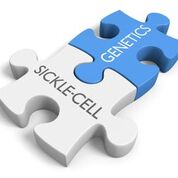
It's always fascinating to trace evolution shaped by disease. A recent study traced the Sickle cell mutation to one child thousands of years ago that helped her survive malaria and pass along this mutation across the globe.
In Sickle cell, the red blood cell is misshapen so that it has a difficult time passing through small blood vessels. There are five genetic versions or haplotypes of the sickle cell gene around the world.
Scientists wanted to know how they arose and came up with two explanations. One is the multicentric model which suggests that five independent events in different regions happened that led to the same mutation. The second model believes a single event gave rise to the hemoglobin S mutation, which is responsible for sickle cell disease. And then, later changes around that mutation in different populations generated the five different haplotypes.
To determine which of these two models is correct, scientists characterized the sickle cells genes in the genomes of twenty-five hundred people from the thousand genomes project, three hundred people from the African Genome Variation Project and a hundred from Qatar. The result pointed to one mutation seventy-three hundred years ago.
Eventually, that mutation branched into a form that gave rise to the haplotypes in Central African Republic, Cameroon, Saudi Arabia and India. Further changes to this haplotype produced a sub-cluster in Senegal. And more changes created a Senegal and Benin haplotype. So, the second model appears to be how sickle cell originated and evolved, all from a single child, and thus changing the world.
More Information
Whole-Genome-Sequence-Based Haplotypes Reveal Single Origin of the Sickle Allele during the Holocene Wet Phase
Five classical designations of sickle haplotypes are made on the basis of the presence or absence of restriction sites and are named after the ethno-linguistic groups or geographic regions from which the individuals with sickle cell anemia originated...
Tracing sickle cell back to one child, 7,300 years ago
New research suggests that the history of sickle-cell disease goes back to a mutation in just one person, a development researchers hope will make treatment less complicated for the many people who suffer from this painful illness. So how have they traced it and why does it matter?...
Sickle Cell Disease
Sickle cell disease is a group of disorders that affects hemoglobin, the molecule in red blood cells that delivers oxygen to cells throughout the body. People with this disorder have atypical hemoglobin molecules called hemoglobin S, which can distort red blood cells into a sickle, or crescent, shape...